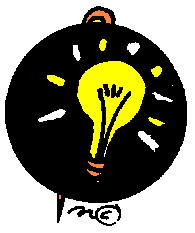 Some teachers have instructed students in Self-Regulation by adapting a Learning Academy Model (Zimmerman, Bonner, & Kovach, 1996). Learning Academies help students focus on behavior and emphasize expert and peer modeling, direct social feedback for performance efforts, and practice routines that involve goal-setting and self-monitoring. A great reliance is placed on tutoring and coaching during actual performance efforts. Students are taught to control their learning processes with self-monitoring and self-regulation so they can learn more with less effort by using the following steps:
Some teachers have instructed students in Self-Regulation by adapting a Learning Academy Model (Zimmerman, Bonner, & Kovach, 1996). Learning Academies help students focus on behavior and emphasize expert and peer modeling, direct social feedback for performance efforts, and practice routines that involve goal-setting and self-monitoring. A great reliance is placed on tutoring and coaching during actual performance efforts. Students are taught to control their learning processes with self-monitoring and self-regulation so they can learn more with less effort by using the following steps:
- Evaluate current level of mastery
- Analyze the learning task
- Set learning goals
- Choose appropriate strategies to master material
- Monitor own performance
Using this approach, teachers:
- shift the responsibility to the student – e.g., encourage students to exercise choices about how to accomplish learning activities; help student shift the focus of their regulation away from the teacher and onto salient cues in the learning task
- adopt a systematic instructional approach; a cyclic self-regulatory approach to learning
- demonstrate model (sequence is important: student observes model, imitates, practices in structured settings, then self-regulates by adapting to changing personal and contextual conditions)
- demonstrate effectiveness of self-regulatory techniques; keep records of student’s progress
- use verbal persuasion; support and encouragement, especially when student perceives that new strategies are not working
The teaching strategies associated with the Learning Academy Model:
- break tasks into components
- use direct assistance and explicit training
- anticipate students’ questions; have clear policy
- incorporate literary and other symbolic forms of information (pictures, diagrams, formulas)
- link strategy use with improved performance, i.e., maintain portfolios; video or audio tape
Next Section: Individual Lessons 1-6
Previous Section: How-to Instruction for Self-Regulated Learning Strategies